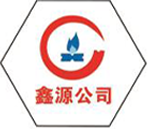
8 月 . 07, 2024 19:45
Back to list
Understanding the Functionality and Importance of Natural Gas Pressure Regulators for Safe Usage
Understanding Natural Gas Pressure Reducers A Critical Component in Gas Distribution
Natural gas is an essential energy source, powering homes, industries, and vehicles worldwide. However, the distribution of natural gas comes with its own set of challenges, particularly regarding pressure management. One crucial component in the safe and efficient delivery of natural gas is the pressure reducer. This article delves into the significance, functionality, and types of natural gas pressure reducers.
What is a Natural Gas Pressure Reducer?
A natural gas pressure reducer, often referred to as a pressure regulator, is a device that controls the pressure of gas flowing through a pipeline. It serves to reduce high upstream pressure to a lower, more manageable downstream pressure, which is safe for consumers while ensuring optimal performance of gas appliances. Pressure reducers are essential in residential, commercial, and industrial applications for maintaining system integrity and preventing potential hazards associated with high-pressure gas.
The Functionality of Pressure Reducers
The primary function of a natural gas pressure reducer is to maintain a stable and safe outlet pressure, regardless of variations in inlet pressure. This regulation is vital because natural gas is transported through pipelines at high pressure to ensure efficient flow over long distances. Once it reaches its destination, the pressure must be reduced to suitable levels for use, typically measured in inches of water column (WC) or pounds per square inch (PSI).
Pressure reducers employ a mechanical mechanism, usually a spring-loaded diaphragm, to adjust the flow of gas. As gas enters the reducer, it pushes against the diaphragm, compressing the spring and allowing a controlled amount of gas to pass through. If the downstream pressure rises above a certain level, the diaphragm moves to close the flow, thereby regulating the pressure. This ensures that appliances, such as furnaces, stoves, and water heaters, receive gas at the correct pressure for efficient operation.
Types of Natural Gas Pressure Reducers
There are several types of pressure reducers, each designed for specific applications. Here are a few common types
natural gas pressure reducer

1. First Stage Regulators These reducers are typically installed in a gas distribution system to lower high inlet pressure to an intermediate level. They are often used in systems requiring a more significant reduction of pressure.
2. Second Stage Regulators Following the first-stage regulators, these devices further reduce the pressure to a safe and usable level for residential or commercial appliances.
3. Line Pressure Regulators These are installed directly in the gas line to maintain constant pressure and are often used in large-scale applications, where consistent pressure is essential for operational efficiency.
4. Lock-Up Regulators This type includes safety mechanisms that shut off the gas supply if the pressure exceeds predefined limits, ensuring the safety of the system.
Importance of Proper Installation and Maintenance
The installation and maintenance of natural gas pressure reducers are critical for safety and efficiency. Improper installation can lead to pressure swings that may cause appliance malfunctions or even dangerous leaks. Routine maintenance, including inspections and recalibrations, ensures that the regulators function correctly over time. Gas companies often have protocols in place for regular checks to ensure compliance with safety standards.
Conclusion
Natural gas pressure reducers play an indispensable role in the natural gas supply chain, ensuring that gas reaches consumers at safe, usable pressures. Understanding their functionality and significance is crucial for everyone involved in the natural gas industry, from engineers to end-users. As natural gas continues to be a pivotal energy source, the importance of reliable and efficient pressure regulation will only grow, underscoring the critical nature of these devices in daily energy consumption and safety.
Latest news
-
Unlocking The Quality Gas Pressure ReducersNewsNov.01,2024
-
The Role of Gas Pressure Reducing StationsNewsNov.01,2024
-
The Importance and Functionality of Safety Relief ValvesNewsNov.01,2024
-
The Essential Role of Safety Valves in Natural Gas ApplicationsNewsNov.01,2024
-
The Essential Role of Gas Pressure RegulatorsNewsNov.01,2024
-
Enhance Your Premium Gas FiltersNewsNov.01,2024

